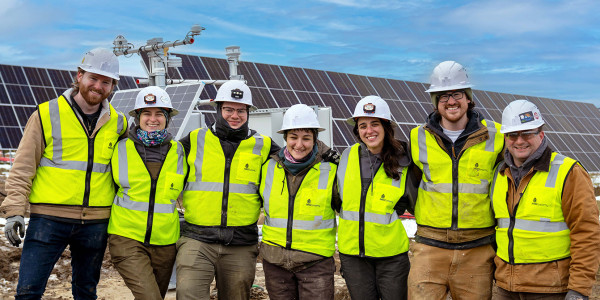September 25, 2012 | Energy Policy, Sustainability + Energy,
Some recent headlines on the PTC (Production Tax Credit) for wind energy have been misleading. Either they confuse a tax credit with a cash hand-out, imply that if not for the PTC wind energy would shrivel up and die, or imply that wind energy receives government support above and beyond what other energy sectors receive. These couldn’t be further from the truth.
- The PTC is a tax credit that enables developers to attract private capital in order to construct a wind farm. Developers don’t receive the tax credit (of $0.02 per kWh) until the wind farm has been constructed, is operational, and is turning a profit. It’s a performance-based incentive that drives up to $20 billion annually in private investment.
- The multiplier effects of the PTC are enormous. After developers receive financing, they are able to secure lease-rights, negotiate power purchase agreements, conduct resource assessment campaigns, hire analysts to determine their estimated annual energy production, procure the wind turbines, construct the wind farms, and then operate them on their own or hand off to an independent owner/operator. In this development cycle, hundreds of companies provide goods and services to the developer – from permitting specialists, to turbine manufacturers like Vestas or GE, to construction firms and sub-suppliers, to local hotels and restaurants… the list goes on and on. The Production Tax Credit is the catalyst for this economic activity, which is why it has had solid bi-partisan support in Congress for years.
- The PTC has successfully lowered the cost of wind power. The cost of wind energy has declined 90% since the 1980s, making it competitive with every other source on the market next to natural gas.* According to a 2011 study from the Lawrence Berkeley National Lab, wind energy costs 6-9 cents per kilowatt-hour, even without the PTC. It’s also important to remember that wind power offers a fixed price over the life of a wind farm, which is 20 to 30 years. If a utility locks in a rate of $0.06 kWh today, they will enjoy that same low rate in 2032. It provides diversity to their portfolio and a hedge against future volatility caused by other sources of energy like natural gas and coal. These fuel sources have to be purchased on an on-going basis to produce electricity, whereas the wind is free.
These are just some of the nuts-and-bolts reasons the PTC works. Why it's caught up in a politically-charged ideological debate is beyond me.
* Natural gas prices are at a historic low because of government subsidies through tax credits, loans, grants, and lack of regulation of hydraulic fracturing.





